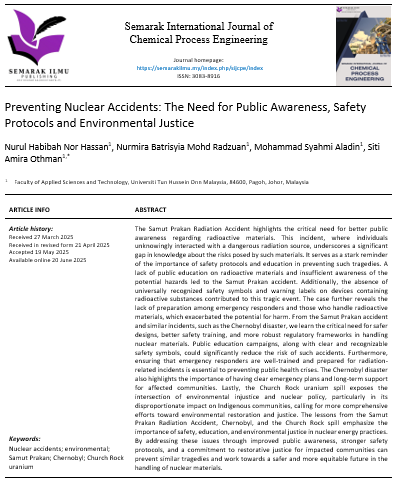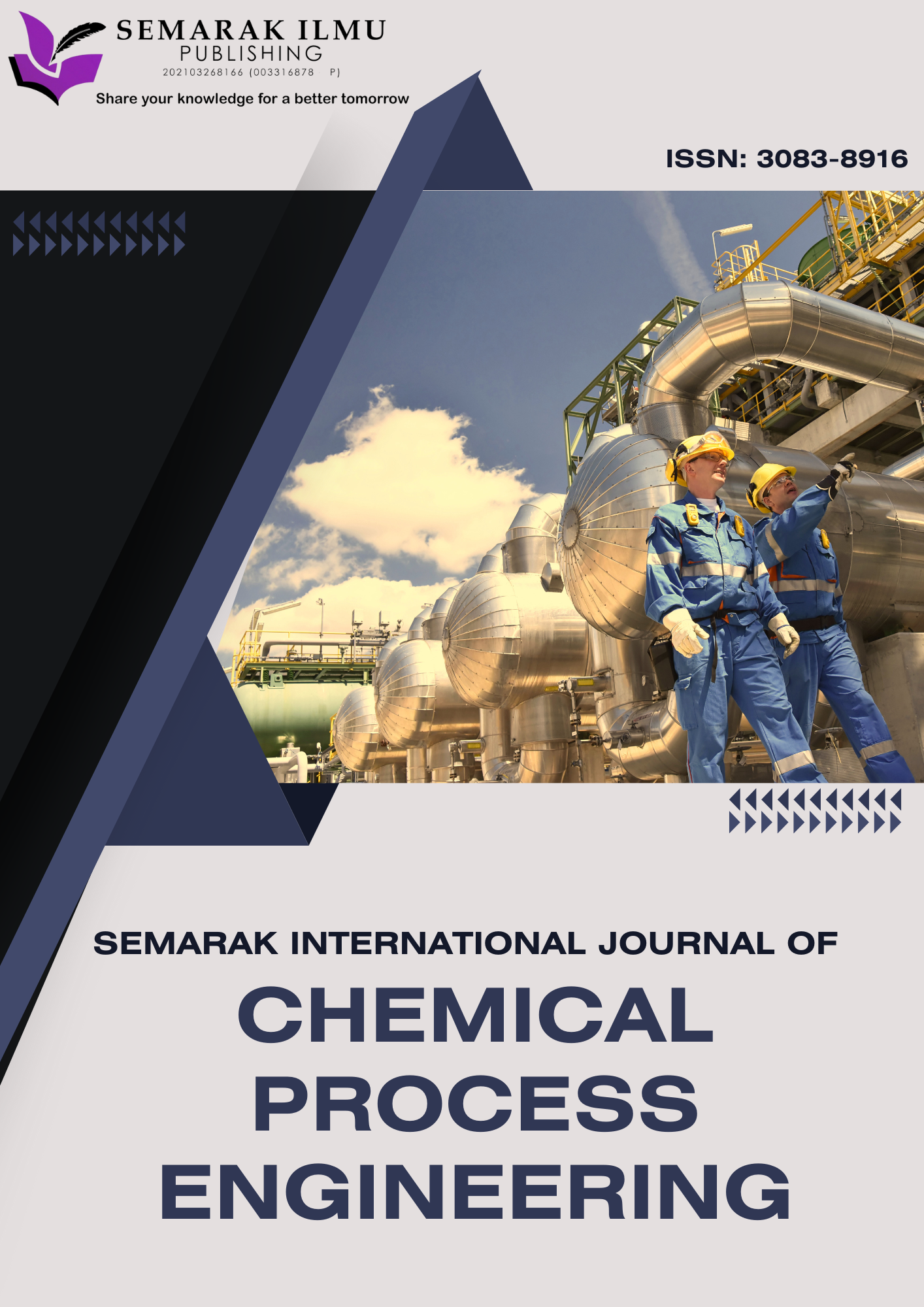Preventing Nuclear Accidents: The Need for Public Awareness, Safety Protocols and Environmental Justice
DOI:
https://doi.org/10.37934/sijcpe.3.1.3751Keywords:
Nuclear accidents, environmental, Samut Prakan, Chernobyl, Church Rock uraniumAbstract
The Samut Prakan Radiation Accident highlights the critical need for better public awareness regarding radioactive materials. This incident, where individuals unknowingly interacted with a dangerous radiation source, underscores a significant gap in knowledge about the risks posed by such materials. It serves as a stark reminder of the importance of safety protocols and education in preventing such tragedies. A lack of public education on radioactive materials and insufficient awareness of the potential hazards led to the Samut Prakan accident. Additionally, the absence of universally recognized safety symbols and warning labels on devices containing radioactive substances contributed to this tragic event. The case further reveals the lack of preparation among emergency responders and those who handle radioactive materials, which exacerbated the potential for harm. From the Samut Prakan accident and similar incidents, such as the Chernobyl disaster, we learn the critical need for safer designs, better safety training, and more robust regulatory frameworks in handling nuclear materials. Public education campaigns, along with clear and recognizable safety symbols, could significantly reduce the risk of such accidents. Furthermore, ensuring that emergency responders are well-trained and prepared for radiation-related incidents is essential to preventing public health crises. The Chernobyl disaster also highlights the importance of having clear emergency plans and long-term support for affected communities. Lastly, the Church Rock uranium spill exposes the intersection of environmental injustice and nuclear policy, particularly in its disproportionate impact on Indigenous communities, calling for more comprehensive efforts toward environmental restoration and justice. The lessons from the Samut Prakan Radiation Accident, Chernobyl, and the Church Rock spill emphasize the importance of safety, education, and environmental justice in nuclear energy practices. By addressing these issues through improved public awareness, stronger safety protocols, and a commitment to restorative justice for impacted communities can prevent similar tragedies and work towards a safer and more equitable future in the handling of nuclear materials.









